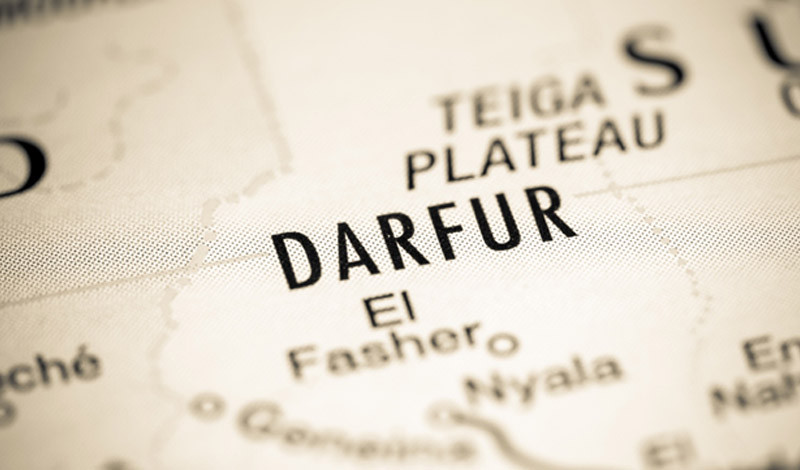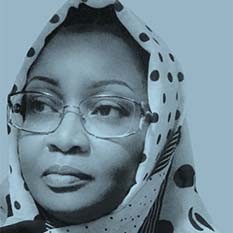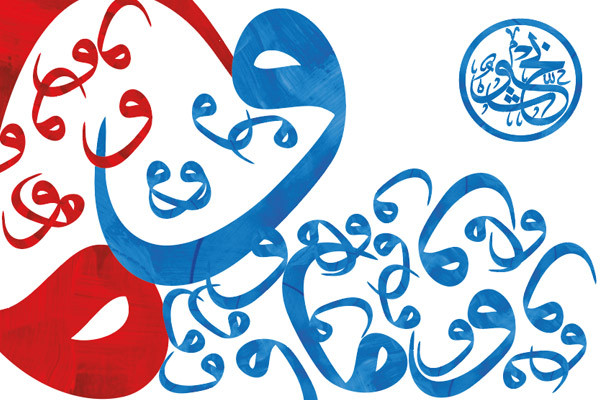Darfur, the Nature of the Conflict
What is the truth behind accusing the Sudan Government of using the Janjaweed for genocide in Darfur?

- by Dr. Sumaya Adam Eisa ,
- Monday, 11th January, 2010
This accusation largely ignores the tribal nature of the conflict that goes back centuries, and the geography of the region that has made resources conflicts common.
Confusion about the actors of the conflict in Darfur is widespread; a great majority in the west believes that the war is ethnic and has two sides. This view led, last summer, to the filing, by the Office of the Prosecutor of the International Criminal Court (ICC), of an application accusing Omar Hassan Ahmad al Bashir current president of Sudan of being criminally responsible for ordering a campaign of genocide directed against the Fur, Masalit and Zaghawa ethnic groups in Darfur (the African tribes).
An accurate understanding of the situation in the Darfur requires knowing the countrys geography and history, how life has changed in recent decades and how simplistic news media treatments have distorted the worlds impression of the region.
Darfur, which lies to the west in the Sudan and is approximately half a million square kilometres, a fifth of Sudans area, is famous for its highlands, specially the Marrah Mountains. This was once one of the greenest parts of coastal Africa, filled with waterfalls and volcanic lakes. Rainfall almost all year round used to facilitate the growth of a great variety of vegetation. However, over the last 30 years the region has suffered serious environmental degradation connected to increase in droughts and the resulting desertification.
Disputes over water and land have progressively raised the tension between pastoralist and agriculturalist populations.
A United Nations report states that the various tribes under attack by the Sudanese troops and Janjaweed (chiefly the Fur, Masalit and Zaghawa tribes) do not appear to have an ethnicity distinct from their attackers.
The Janjaweed used to denote those nomadic Bedwin Arab who were moving with their herds following the rains. These have no stable villages. So when they came with their herds for water, conflicts sometimes arose. Janjaweed also connoted those of the Arabs who did not abide by civil laws, those who were roaming around, seeking grazing land. But the name has become a synonym for barbaric behaviour. Those nomads had always been at odds with Darfur's sedentary population over natural grazing grounds and farmland. Conflicts in earlier times typically were tribal in nature and resolved by tribal Majlis agreements.
However, changed conditions have affected the conflicts. Drought has made the conflicts more desperate. Globalization has brought new attention to the region and has transformed the name Janjaweed. It now means bad and signifies all Arab tribes and treats them all as engaged in genocide against Africans who live in established villages. In reality the groups have intermarried has over the centuries, resulting in a unique Afro-Arab culture.
The current conflict in the Sudan has more than these two sides, however. Another side is a collection of rebel groups, notably the Sudan Liberation Movement /Army(SLA) and the Justice and Equality Movement (JEM), recruited primarily from the land-tilling non-Arab Fur, Zaghawa, and Masalit ethnic groups. These have conflicts with the Sudanese Government in Khartoum over political authority. They want to share in the rule of Sudan in order to direct development resources to their areas.
Since the signing of the Darfur Peace Agreement in 2008, these movements have exploded into a dozen shifting factions. To mention just few; Sudan Liberation Movement/Minni Minawi (SLM/MM), Sudan Liberation Movement/Abdel Wahid (SLM/AW), Sudan Liberation Movement/Khamees (SLM/Khamees), Sudan Liberation Movement/Ahmed Shafie (SLM/AS); also known as SLM/Classic,Group of 19 (G19), Sudan Liberation Movement/Free Will (SLM/Free Will, Great Sudan Liberation Movement (GSLM), The Group for Development and Grievances etc.
Far from originating from age-old ethnic animosities, the conflict in Darfur is derives from circumstances of serious environmental degradation, connected to increasing phenomena of droughts and desertification increasing disputes over water and land. These have progressively raised the tension between pastoralist and agriculturalist populations from one side and between the population and Khartoum government on the other side.
The Sudanese government, while publicly denying that it supports the Janjaweed, is accused of providing money and assistance to the group and has participated in joint attacks targeting the tribes from which the rebels draw support
Lower class, because of their lack of lands, the Arab tribes tried to seize the opportunity for land by aligning with the Government military force. The alliance between the two is a marriage of convenience. The Sudan government wants to overcome the insurgency, while Arabs want a greater share in lands and superiority.
Darfur is vast area, and due to diminishing resources, many other armed gangs have sprung up, throwing the region into anarchy. It is difficult to differentiate Janjweed from rebels from armed gangs of robbers. The whole situation may have long been out of the hands of the Khartoum government. The governments aerial bombing of villages and semi-open areas is in evidence that the Khartoum armed forces have lost control on the ground in the area.
This has led to the conviction in the west that Government of Sudan targets the populations of the Fur, Zaghawa and Masalit with the intent of destroying them. The tribes guilt is in sharing the ethnicity of the rebel groups that, since 2003, have challenged the Government in Khartoum by conducting an armed insurgency in the region
The conflict in Darfur is far from an Arab-versus-African ethnic war. It is a conflict generated and sustained by underdevelopment and successive Sudan governments overlooking the unfair distribution of resources and made worse by contemporary droughts. Because of its potential resource riches, it should not be difficult to marshal international aid to its development and hence stem the chaos. This requires that the international community see the diverse origins of the countries conflicts and understand that development it the effective exit strategy.

Dr. Sumaya Adam Eisa
Researcher, GLOBAL AFFAIRS DEPARTMENT (FORMER)
Read More
Areas of Expertise
- Writing
- Research
- Editing
- Translation
Education
- PhD, Fictional Genre Translaion
- M. A. in Translation & Interpretation, American University of Sharjah, UAE
- B. Sc. In Rural Economics, University of Khartoum, Sudan
Bio
Skilled writer dedicated to work to high standards with extreme commitment to meet deadlines and assure output accuracy. A dynamic experienced translator, translated for the FAO and other regional and international organizations. The Sole Author of Fisheries and Marine Science Dictionary, English-Arabic, the first of its kind in the Arab world. CEO and Founder of TBLT, Khartoum, the Translation Firm which translated the Legislation of the State of Qatar. Has great experience in the fields of scientific research, business and technical writing and translation. In addition to translation of hundreds of economic, administrative and scientific reports and studies. Volunteered in women and other non-governmental associations.

